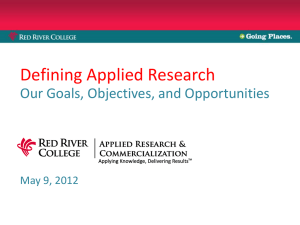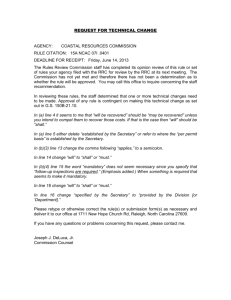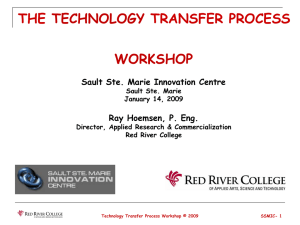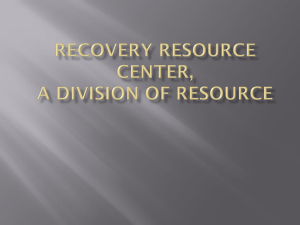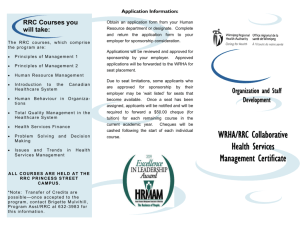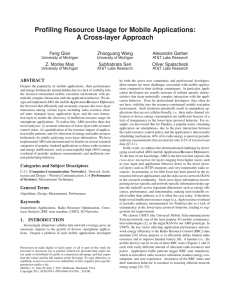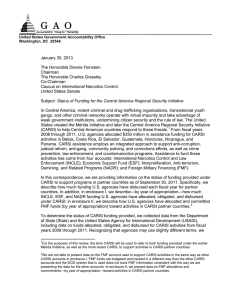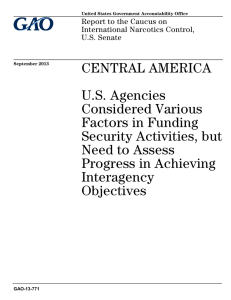applied research workshop - draft!
advertisement
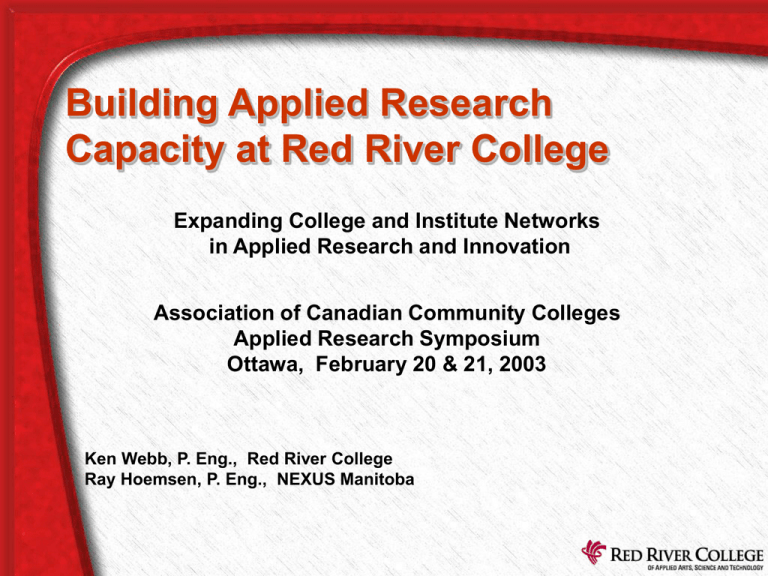
Building Applied Research Capacity at Red River College Expanding College and Institute Networks in Applied Research and Innovation Association of Canadian Community Colleges Applied Research Symposium Ottawa, February 20 & 21, 2003 Ken Webb, P. Eng., Red River College Ray Hoemsen, P. Eng., NEXUS Manitoba RRC FAQ's • • • • • • • • MB’s 2nd largest post-secondary institution Comprehensive college Preparatory programs to joint degrees Business, technology, trades, health sciences, community services, applies arts (no UT) Serve 8,000 FT and 24,000 PT annually 2 major campuses, 2 satellite centres, four regional centres, aviation centre at the airport $87 Million annual budget - 1100 employees Block funded not formula funded • Enrollment stable and rising (+9.0% Sept. 02) • Strong entrepreneurial focus Building Institutional Applied Research Capacity Overview: • • • • • • Brief history of AR at RRC Building a research mandate Building institutional support/culture Establishing an Applied Research Office (ARO) Recent activities / lessons learned Next steps Why Do Applied Research at RRC? • • • • Support economic development of Manitoba companies Enrich learner’s academic and work-force preparation Support national and provincial innovation strategies Maximize utilization of college resources, intellectual and physical, by making them available to the community • Ensure program relevancy • Create partnerships and collaborative networks between colleges, universities, industry and communities • Provide excellent professional faculty development History of Applied Research at RRC • For many years RRC has conducted applied research for firms and organizations on a project basis: • • • • • • • • Prototyping Tooling (Boeing Canada Technology) Rapid Prototyping (New Flyer Industries Limited) Pavements, Asphalts, Materials (Manitoba Highways) Internet Delivery (Winnipeg Free Press) Multimedia Courseware (ATCI) Shadow Masks (Cancer Care Manitoba) Industrial Design (Phillips Temro) National ECE Curricula (OISE/Lawson Foundation) Building an Applied Research Mandate • Historically supported industry on an ad hoc basis* • Applied research feasibility study (1995) • RRC governors add applied research to college 5-year business plan (1996) • Strategic Plan - “develop the capability to undertake applied research on a cost recovery basis” (2000)* • College faculty develop a major applied research project (CFI) initiative (2000)* • Institutional research plan to identify major areas of applied research (2000)* • Begin adding AR projects to curricula (2000)* Building an Applied Research Mandate • Development of a strategy and concept for an Applied Research Office (ARO) (2001) • RRC mission incorporates applied research (2001) • Develop linkages with established research partners and agencies to build capacity, experience, credibility (2001) • Western Diversification supports use of consultant to develop strategy for ARO (2001-2002) • First-ever CFI Award for the Centre for Applied Research in Sustainable Infrastructure “CARSI” (2002) • On-going policy and procedure development (2002-2003)* • Manitoba Innovation Fund support (2003) • Internal workshops (2003)* • Startup of the ARO (Spring 2003) Guiding Values and Principles for Applied Research at RRC • Show linkages to the economic development of Manitoba and Canada • Be consistent with RRC’s strategic plan • Be industry and community driven • Provide enrichment of student’s academic training, applied research techniques and workforce preparation • Provide professional development opportunities for faculty • Provide an opportunity to create partnerships and collaborative networks between other research institutions, industry and the community Applied Research Focus Areas • Start off focused on a few areas where you can be really good • Bio-Sciences • Manufacturing Design Technology • Human Care Services • Education Technology • Sustainable Infrastructure Technology Establishing an Applied Research Office • STRATEGY • to build from and leverage existing strengths and partnerships to further develop and enhance an effective applied research program • CONCEPT • Applied Research Office to act as a “Window or One-Stop-Shop” to serve as a gateway for external partners seeking to work with the College on applied research Focus of Applied Research • Distinguish between college and university research • Applied research - stimulate and support research activities aimed at producing a (near) immediate practical impact in the community ARO Role – The “4 C’s” • COORDINATE applied research activities • Facilitate COOPERATION with internal and external communities • Promote supportive CULTURE • COMMUNICATE with the community The Solution • There is no single solution to securing the necessary support to create, startup and sustain an ARO • It takes creativity and persistence, but can be done • e.g.. UM ITD > ILO > SMARTpark ($60,000 in 1986 > $5.6M in 1999) In the Beginning . . . . . • Central support for grant and contract administration • Government support for startup operations – targeted proposal • Faculty/departmental support for partnership initiatives • Industry support for outreach • Experienced professional with administrative support Action Plan – Role & Place • Role and program definition • Initial role • Program selection • Research grant / contract seeking • Governance and place in RRC • Direct report to Vice-President • External Advisory Board Action Plan - Policies • Policy and procedure development • • • • • • Research integrity Research ethics Intellectual property rights Student rights Conflict of interest Conflict of commitment Action Plan - Resources • Resource Requirements • Core support • Sponsored research administration • Outreach • Intellectual property management • Leverage existing relationships and partnerships – not only with industry, but also the universities Action Plan - Startup • • • • • • • Formulate effective policies Pursue NSERC eligibility Secure external financial support Foster culture Demonstration project – CARSI Start communicating and networking Introduce small AR projects into faculty and curricula to build up a track record • Learn from other colleges Site Visits • • • • • • British Columbia Institute of Technology Southern Alberta Institute of Technology WestLink Innovation Network Olds College Centre for Innovation Association of Community Colleges of Canada Natural Sciences and Engineering Research Council • Nova Scotia Community College • Nova Scotia Advisory Board on Colleges and Universities Site Visits – Lessons Learned • Establish a separate office, as part of the College, to manage applied research activities • “Innovation” should be considered in the ARO’s name • Office should report to the Vice-President Academic - especially if the College is placing a high priority on applied research • Adequate base funding/resources are essential • Marketing/business development will be key Site Visits – Lessons Learned • Importance of internal communications cannot be overlooked • Involve current faculty/staff – use them to create interest/excitement • IRAP is a key partner • Initially focus on existing areas of expertise (an inventory would be helpful) • Students, faculty and staff have to benefit Site Visits – Lessons Learned • Effort of going through the NSERC-eligibility process is beneficial • Not necessary to develop brand new policies from scratch - adopt/adapt suitable policies from others • NSERC is making a sincere effort to learn more about the Colleges • Most Universities view the Colleges as “junior partners” • Leverage existing partnerships New Research Centre for RRC • CFI (Canada) and MIF (Manitoba) support establishment of Centre for Applied Research in Sustainable Infrastructure – CARSI • Grassroots initiative from faculty and staff • New 8,000 sq. ft. building/lab • Model sustainable intelligent building • Demonstrate energy efficient and alternate energy techniques • Incorporate advanced composite materials • House two laboratories • Construction materials • Environmental technology CARSI: Project • Grassroots cross departmental project for CFI • Developed broad based support from external agencies (CMHC, MB Hydro, CCRB, IRAP, etc) • Not successful first time round – good concept, too ambitious, weak research team • Focus the concept, build linkages and support from established research institutions and agencies (UofM, ISIS) • Hired research experienced faculty • Resubmitted • Second time’s a charm! • After CFI, continued to work for provincial support CARSI: Organization • Strategic Business Unit • Operates on a “Cost Recovery” Basis • • • • Research Board Advisory Council Technical User Committees CARSI Research Teams • Research Project Leaders • Technical support • Students: Research Training Next Steps (Priority Activities) • • • • • • • • Policy development NSERC eligibility ARO Structure - governance and management Encouraging/enhancing applied research environment and culture Communications and outreach Leverage key project: CARSI Complete ARO business plan Startup ARO FY 2002-03 Q4 Current Faculty Consultations • • • • • • Name for the ARO Policy consultation (e.g. IP, Conflict) Appropriate incentives Outreach and communication ideas Potential projects Relevant contacts (to build the network) For More Information Ken Webb Vice-President, Academic Red River College 204-632-2498 or KWebb@rrc.mb.ca Ray Hoemsen President/Managing Director, NEXUS Manitoba 204-799-6987 or RayHoemsen@NexusManitoba.com

